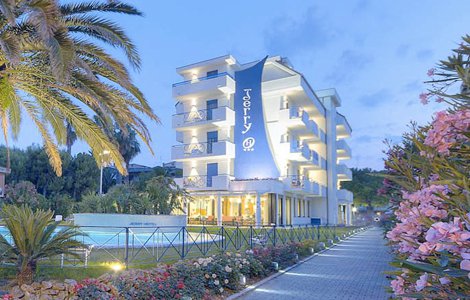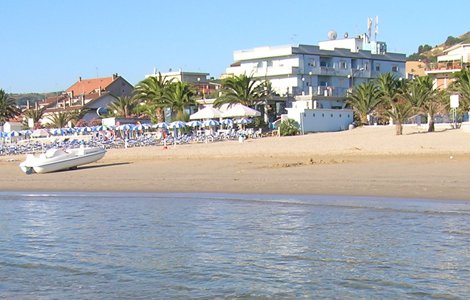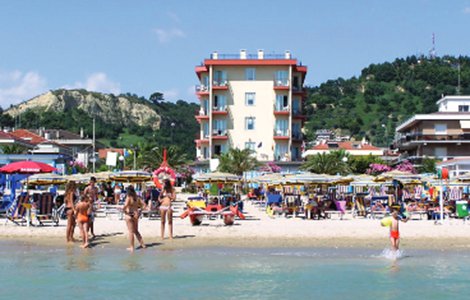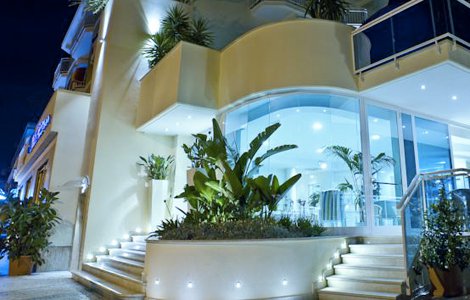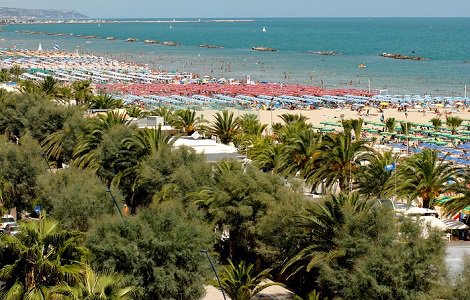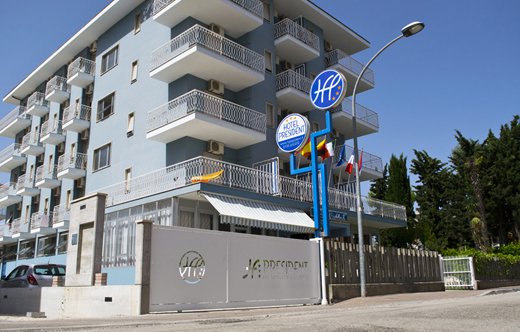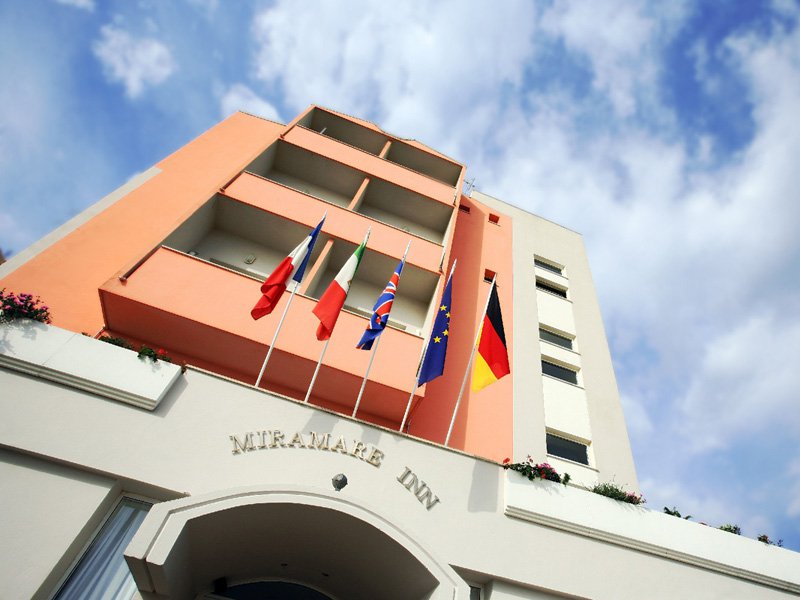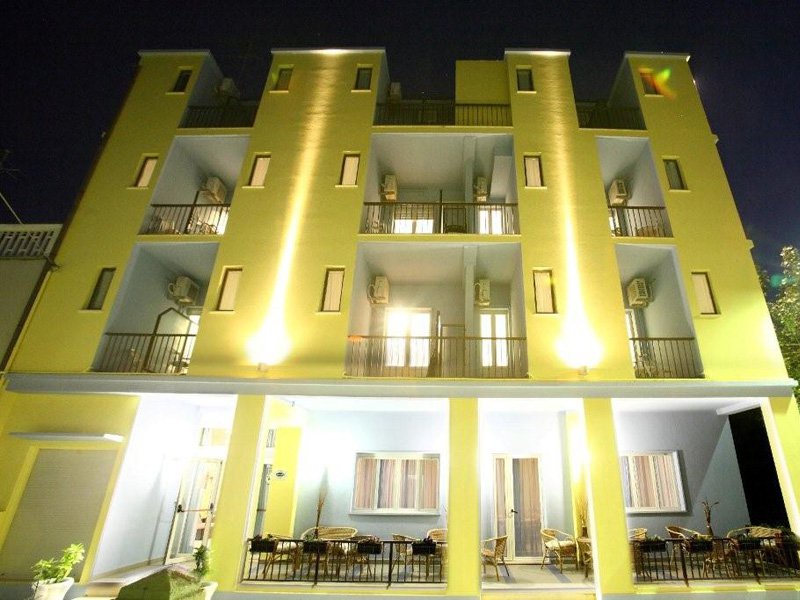Find out Grottammare
Info
Known as the "Pearl of the Adriatic", Grottammare is located in the southern area of the Riviera Picena, between the cities of Cupra Marittima and San Benedetto del Tronto. Crossed in the middle by the Tesino river and further north by the 46th parallel, it almost forms a single city with San Benedetto: about 10 km of seafront paved with exotic palm trees interrupted in part, on the border between the two municipalities, by one of the most of the Adriatic.
The city can be reached via the SS16 state road and the A14 motorway (exit "Grottammare").
The SS16 cuts the city in two, separating the lower part of Grottammare (4 a.s.l. ) and the upper part (126 meters above sea level), which dominates the landscape with its old walls surrounded by vegetation. Its economy is based on tourism and related services, and on a discrete nursery activity.
To be seen
Grottammare Castle
The upper part of Grottammare is almost completely enclosed by the walls of the old castle. The village, restored in recent times, was probably built in the 10th century, and subsequently strengthened (in the 12th century) when it became part of the possessions of the city of Fermo. Of the old castle that was on top of the hill, a few sections of walls and the bases of the towers remain, immersed in a luxuriant pine forest. The wall that surrounds the ancient village probably dates back to the 13th century. To the north we find the "Tower of the battle" dating back to the XV-XVI century. composed of two floors with an internal wooden staircase. The castle was accessed through three gates: Porta Marina (not far from the "Battle Tower") to the east, Porta Castello to the north (from which one arrives at the "Oasi dei Monti") and Porta Maggiore to the south (demolished at the beginning of the 1900). Entering from the south side of the village we immediately find ourselves in Piazza Peretti, overlooked by the Clock Tower, the Orange Theater on whose facade, inserted in a niche, we can observe the statue of Sixtus V, modeled in 1794 by artist Stefano Interlenghi, and the Church of S. Giovanni. On the east side of the square, a "loggia" offers a beautiful view of the city and the coast. Continuing inside the village we find the Church of Santa Lucia built at the request of Pope Sisto V.
Villa Laureati
It was built in the eighteenth century, in neoclassical style, commissioned by the bishop Bartolomeo Bacher and subsequently passed among the properties of the Marquis Laureati. Inside it, after the battle of Castelfidardo, Vittorio Emanuele II received the Delegation of the Bourbon Kingdom in October 1860.
Villa Azzolino
On the road leading to the historic center of G. we find Villa Azzolino, built in the 17th century at the request of Cardinal Decio Azzolino most likely to a design by Bernini (in neoclassical style). In 1665, according to some historians, Queen Christina of Sweden was hosted there and between 1827 and 1833 King William of Westphalia, Napoleon's younger brother, stayed there several times.
Church of Sant'Agostino< /b>
Originally consecrated to S. Paterniano, it changed its name after the Augustinian friars moved there in 1451, building the convent there in 1517 and suppressed in the 16th century. XVII. The church, located on the road to the historic center, is built with a single nave with a roof supported by wooden beams.
Church of Santa Maria dei Monti
The church, built in a place where perhaps there was a Marian sanctuary, is located on the road to Ripatransone not far from the old house, and was originally part of a convent ("about 1600").
Church di San Martino
The church of San Martino is located at the beginning of the Tesino Valley. The church probably rests its foundations on a pagan temple perhaps dedicated to the cult of the goddess Cupra, a divinity perhaps of Picene origin. The church was built by some Benedictine monks approximately between the 7th and 8th centuries. Consisting of three naves, internally it is simple and bare, as is the external facade. The Jubilee Festival is also celebrated in the church of S. Martino.
Church of San Pio V
The church, in neoclassical style, is located on the SS 16, in the homonymous square and it was built in 1780.
Villini Liberty
They are largely concentrated on the northern seafront of Grottammare and many have been recently restored.
History
The name of the city derives from "Groctae", with which it was indicated in medieval times, even if the origins of Grottammare are much older. The first settlement dates back to VIII - VII BC. by the Piceni, an ancient people who occupied this area of the Marches, before the colonization by the Romans began (about the 3rd century BC). The development of the city began in the 7th century, when a colony of Farfa monks settled here. In 1175, due to a storm, Pope Alexander III was forced to stop in the city and was hosted by the monks. Favorably impressed by the welcome of the citizens and by the celebrations that took place in those days, he granted the plenary indulgence, obtainable through the "Sagra Giubiliare", a celebration held every time on July 1st it happens on a Sunday.
In 1259 the city passed into the hands of Fermo who made it another stronghold to interpose in the rivalry and territorial expansion of the city of Ascoli; from here on the fortification of the city begins, which will be completed around 1500. Felice Peretti was born in 1521 and became pope with the name of Sisto V.
In 1779, due to a landslide, the castle was damaged which will encourage the urbanization of the coastal area and that along the Tesino river. In this period the cultivation of citrus fruits was introduced by Bishop Bartolomeo Bacher. In 1860 in Grottammare the meeting between the Neapolitan commission of the Bourbon Kingdom and King Vittorio Emanuele II took place. Precisely at the turn of this period (1800 and 1900) the city begins its transformation into an elegant seaside resort made up of Art Nouveau villas surrounded by gardens that look like small oases, with the old city as a backdrop, which dominates the landscape protected by its medieval walls.
Celebrities
Pope Sixtus V (1521-1590)
Felice Peretti was born on December 13, 1521, into a family of humble origins from Montalto Marche. He entered the convent in 1532 and graduated in theology in Fermo in 1548. In 1557 he entered the Holy Inquisition. In 1566 he became attorney general of the order and in 1570 he became a cardinal.
In 1585 he became pope with the name of Sisto V.
Pericle Fazzini (1915-1989)
Pericle Fazzini, painter and "sculptor of the wind", as Ungaretti defined him, began his journey in sculpture in his father's carpenter's workshop. In 1986 he created "The Resurrection", a bronze work created for the Sala delle Udienze in the Vatican.
